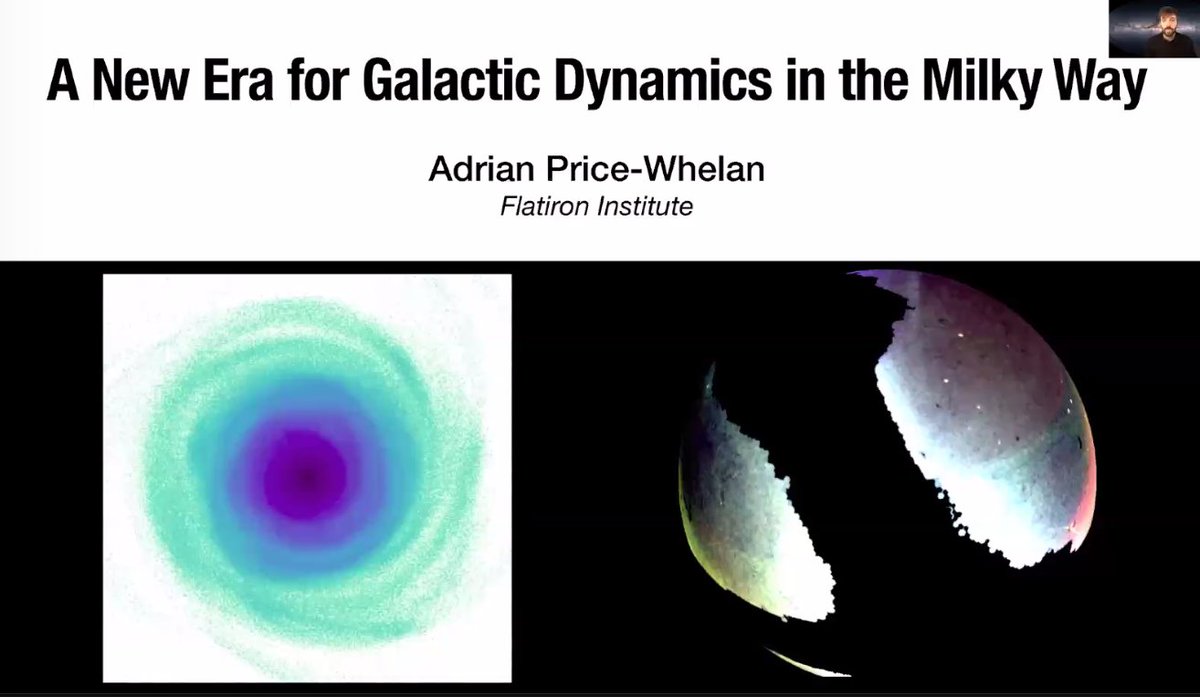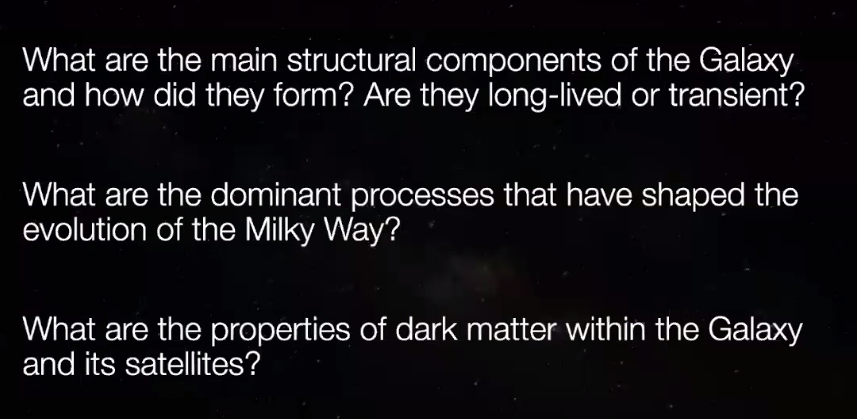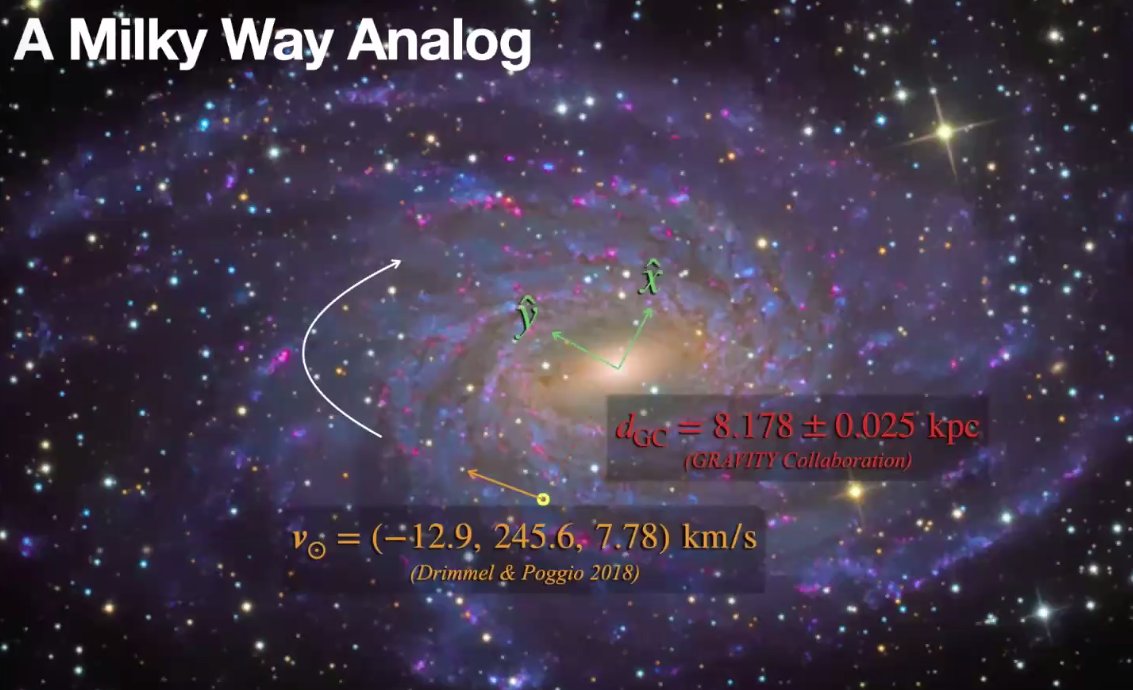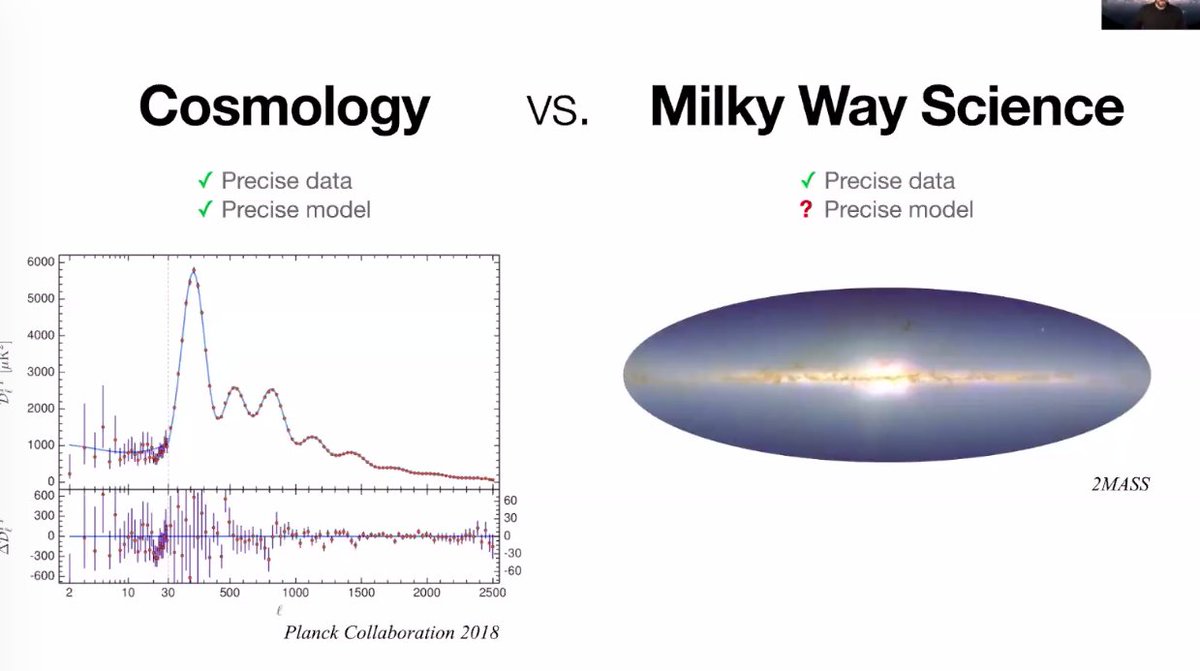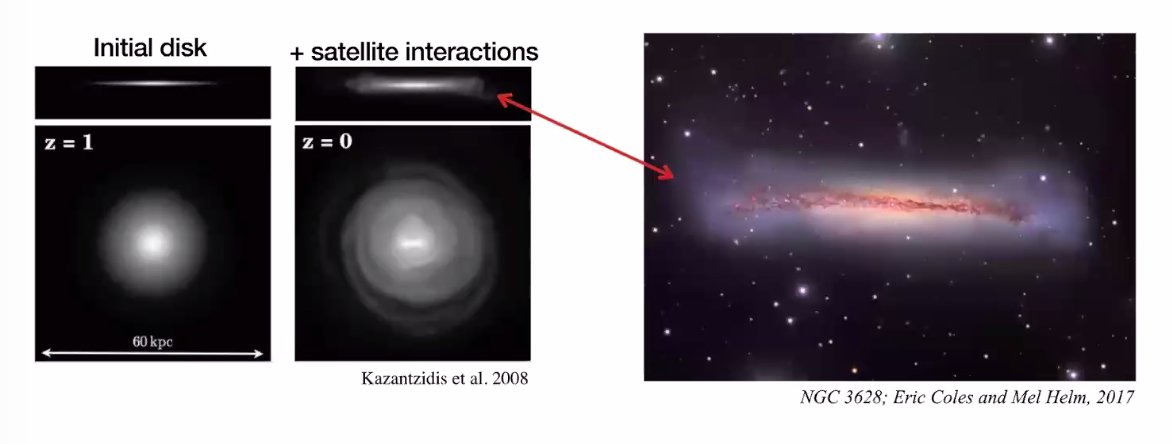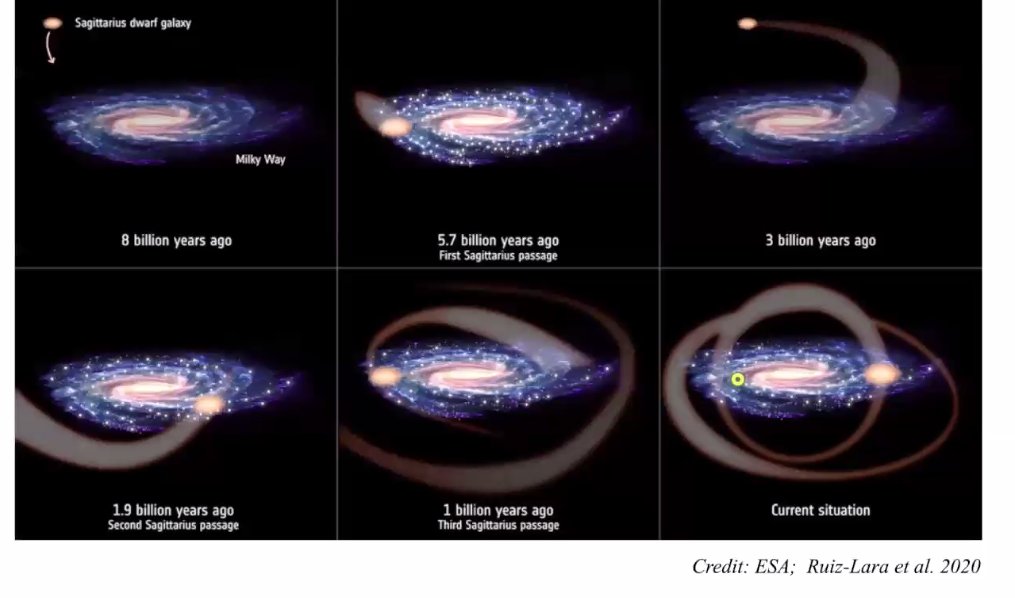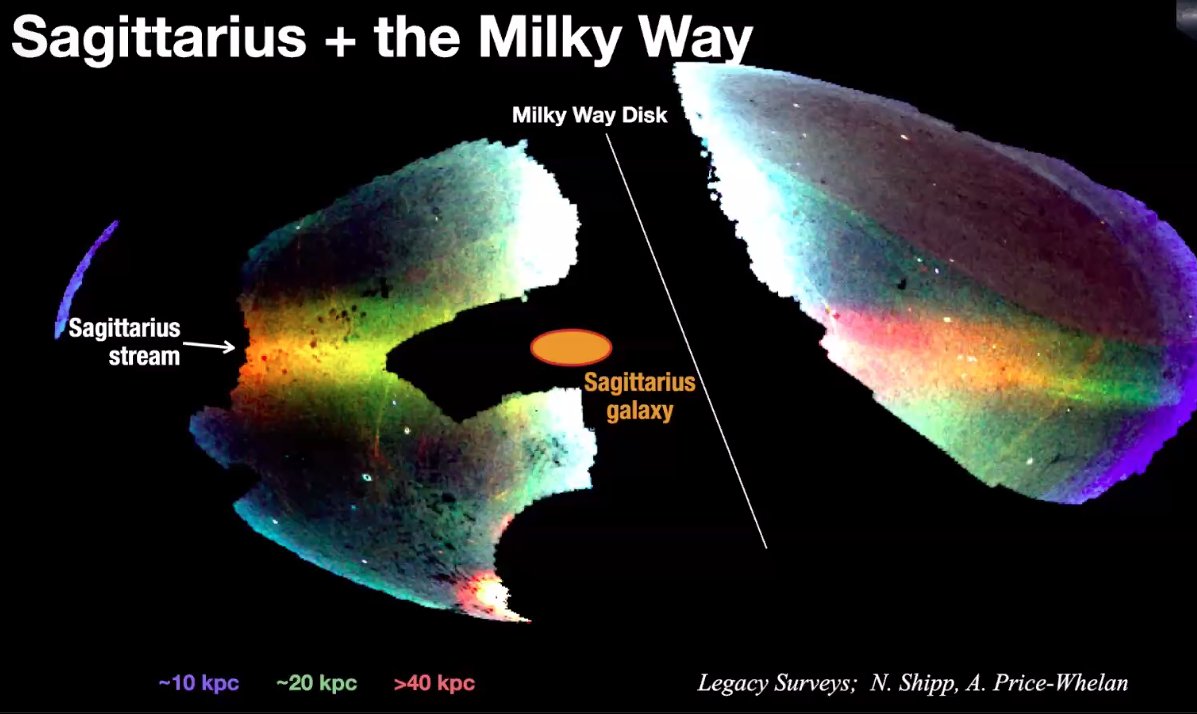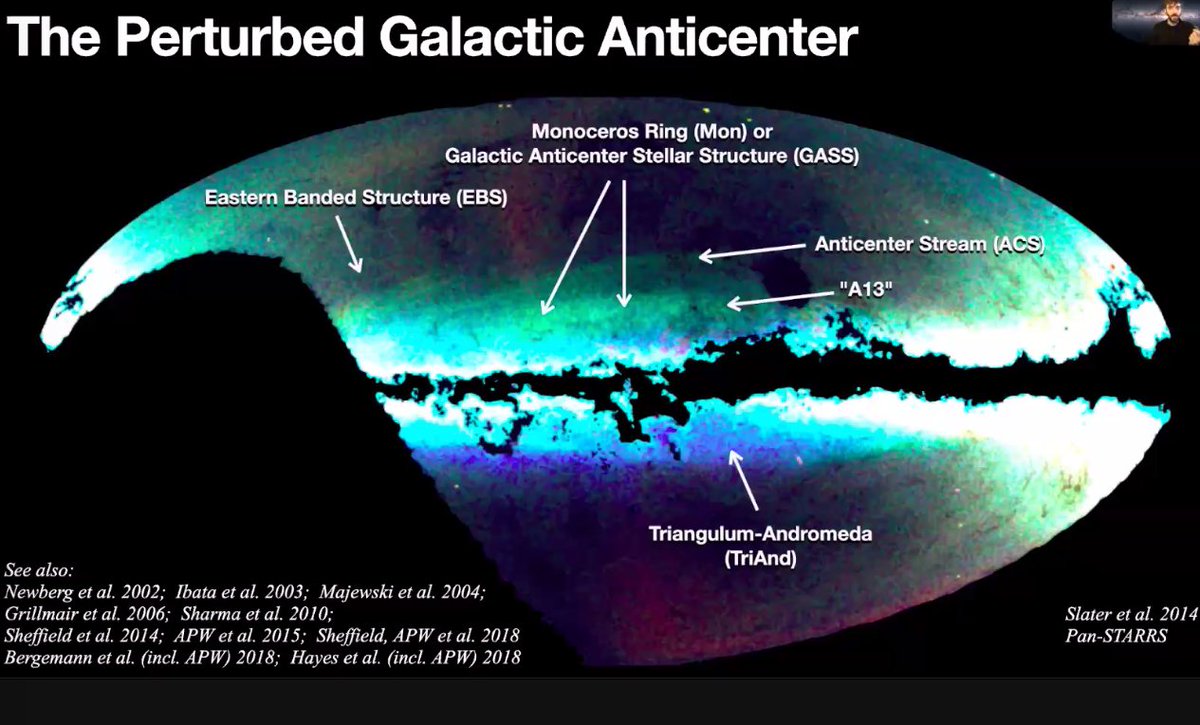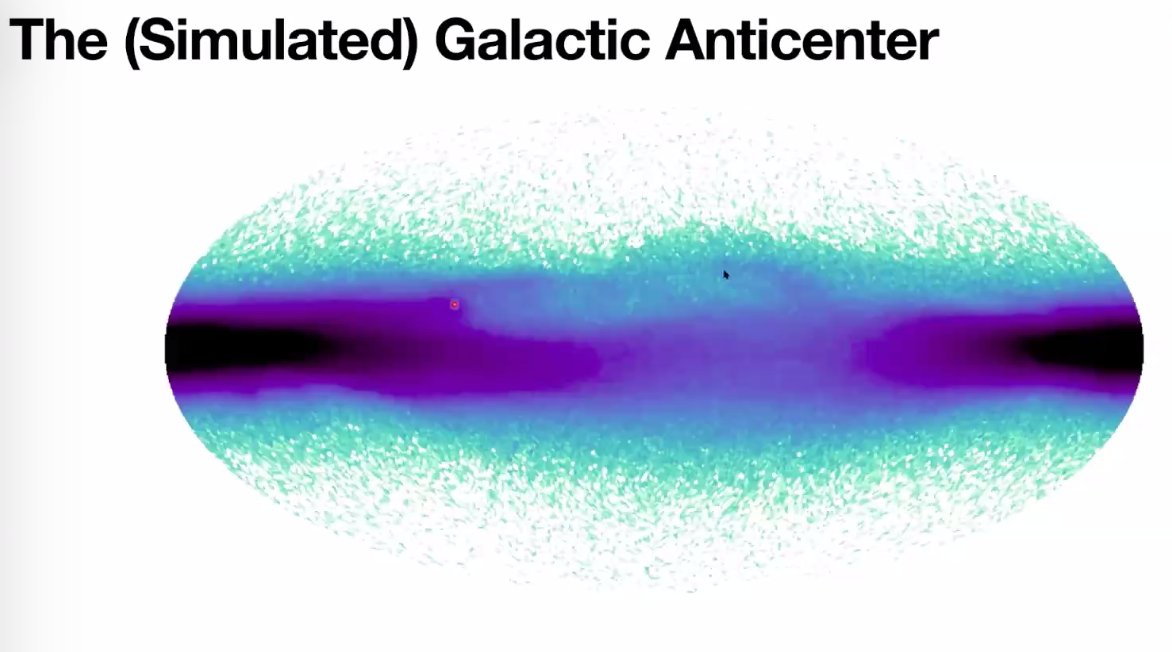The first plenary of the second day of #AAS237 is titled " A New Era for Galactic Dynamics in the Milky Way" and is being given by Adrian Price-Whelan from @FlatironCCA!
Dr. Price-Whelan starts his talk acknowledging the difficulties of the past year. "It's okay if you can't listen to this talk, it's okay if you're struggling with motivation, you shouldn't feel like less of a scientist or a person for feeling these feelings."
"The Milky Way gives us a front row seat to Galaxy evolution and we get a 3D view of the mass distribution (both visible and invisible). It's a great time to be studying the Milky Way because of all of the rich data sets."
"We're really well-poised to study these dynamics thanks to amazing surveys of the Galaxy." These surveys have released a lot of their data sets publicly!
We have nearly all-sky surveys that cover the sky. Gaia has given us incredible astrometric data with its parallax and proper motion measurements. Now we can see ~1.7 billion stars. There have also been spectroscopic surveys of the Milky Way!
We can see a lot of the galaxy through infrared surveys like the 2MASS survey. Here are the components of our Milky Way:
All of that stellar content is sitting in a halo of dark matter!
A lot of work has been done to understand the Milky Way disk, but many researchers have focused on the stellar halo, which could be made up of different dwarf galaxies that have collided with the Milky Way!
Gaia is incredible, it gives us incredible precision on the stars we already know and also increases the number of sources we have by discovering new ones!
The future of Galactic dynamics will embrace and use this disequilibrium we find!
What are the dynamical processes that shape the Milky Way? Satellites and mergers, which cause deviations from the simple models used.
General picture of minor mergers: the satellite enters the Milky Way, perturbs the Milky Way disk/structure, and disrupts and forms debris streams/substructure. We see all of these things happening in the Milky Way right now!
One example of a merger that's currently going on is with Sagittarius and the Milky Way! We know that Sagittarius been around for a while because of the Sagittarius stream.
The impact that Sagittarius has had with the Milky Way disk have significantly perturbed it. There are many substructures of the Milky Way from previous perturbations!

 Read on Twitter
Read on Twitter